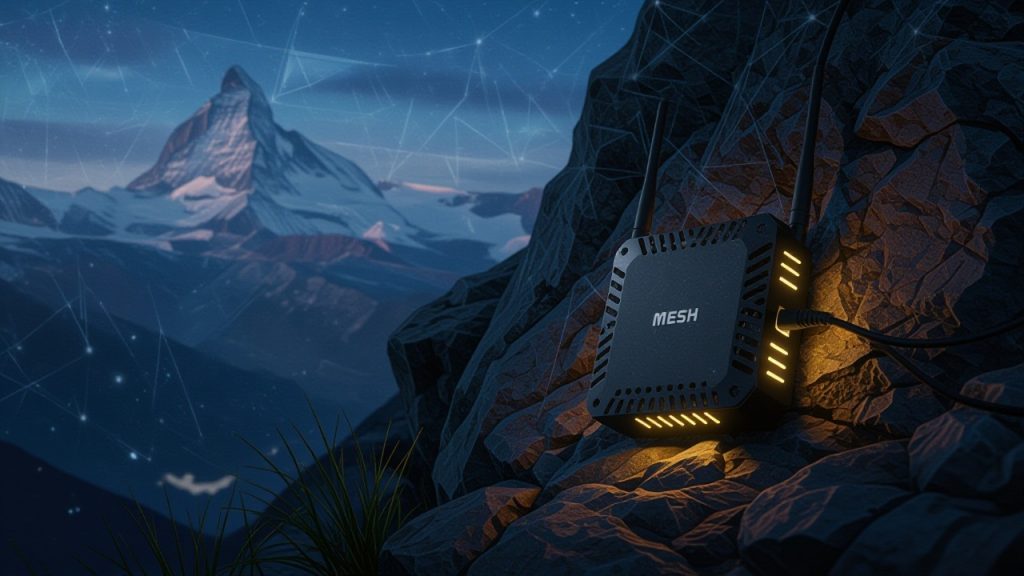The cypherpunk toolkit is mature. We have strong encryption, anonymous cryptocurrencies, mesh networks, and decentralized protocols. We’ve solved the technical problems of digital privacy and financial sovereignty. Yet most of us remain embedded in systems we theoretically know how to escape. Why?
Picture a family in Paul Rosenberg’s “The Breaking Dawn,” panning for gold in remote Alaskan streams. The father works with underground miners who’ve mastered the art of avoiding “rangers, regulators, and tax men.” Three times a year, Calgary Dave appears—sometimes by boat, sometimes by small plane—to smuggle their gold out. They’re not revolutionaries. They’re not writing manifestos. They’re just quietly building wealth outside the legacy rulership system’s reach.

This scene captures something we’ve missed in our focus on cryptographic elegance: liberation isn’t about the tools, it’s about understanding patterns that have worked for centuries.
The Mountains Know Something We Don’t
Two thousand years before Bitcoin, the hill peoples of Southeast Asia solved the same problem we face. In the vast mountainous region scholars call Zomia—spanning parts of Vietnam, Cambodia, Laos, Thailand, Myanmar, and southern China—millions of people maintained stateless societies despite being surrounded by aggressive empires.
James C. Scott’s research (in The Art of Not Being Governed: An Anarchist History of Upland Southeast Asia) reveals their secret: they weren’t primitive peoples who failed to develop states. They were sophisticated strategists who understood something about power that we’re only rediscovering. Every aspect of their society—from their preference for root crops over rice, to their oral traditions instead of writing, to their flexible kinship structures—served a single purpose: remaining ungovernable.
People often say that these people are uncivilized and tribal and think that they have just not migrated yet because they don’t understand the benefits of living under state control. Yet the reverse migration was more common – running for the hills to evade slavery, serfdom and taxation.

Consider their agricultural choices. Rice paddies create fixed assets that states can count, tax, and control. Root crops like yams grow underground, can be harvested flexibly, and leave no visible wealth to confiscate. When tax collectors arrive, there’s nothing to see. When armies need provisions, there’s nothing to seize. It’s agricultural cryptography—hiding value in plain sight.
The Digital Underground
In “The Breaking Dawn,” we see the same pattern emerge through technology. The novel’s AltNet isn’t just a communication network—it’s a digital reproduction of Zomia’s geographic advantages. Mesh nodes appear and disappear like hill villages. Ferry nodes smuggle messages across government networks like Calgary Dave smuggling gold. Users pick up pirate signals carefully, knowing that staying too long in one spot invites detection.

The economics are identical to what drove states from Zomia’s mountains. As one character observes, governments are “running low on money” because people increasingly use untaxable transactions. The state can’t tax a Bitcoin transfer it can’t see, can’t confiscate gold it can’t find, can’t regulate barter it can’t document. Each person who opts out incrementally increases the cost of monitoring everyone else.
The novel shows this playing out in real time. Government employees aren’t getting paid on schedule. Services are being cut. Eventually, the state makes a rational calculation: abandon the periphery, concentrate resources in major cities where surveillance is economical and populations are dense enough to tax efficiently. Rural areas become functionally autonomous not through revolution, but through economic mathematics.
The Invisible Revolution
Here’s what both Zomia peoples and Rosenberg’s characters understood: the moment you become politically visible, everything changes. Hill peoples could have organized armies, declared independence, issued manifestos. Instead, they melted into the mountains and appeared so backward that states wrote them off as not worth governing.
The Breaking Dawn’s refugees follow the same playbook. They don’t join protest movements or political parties. They don’t even call themselves refugees or resistance fighters. They simply pursue individual choices—using cryptocurrency, communicating through mesh networks, trading in precious metals—that happen to make them economically invisible to the state.
This invisibility is strategic genius. A state can rationally abandon territories that cost more to control than they generate in revenue. But a state cannot rationally ignore political threats, no matter the cost. The moment a liberation movement becomes ideological, it threatens not just peripheral revenue but the entire system’s legitimacy. That triggers unlimited resource deployment regardless of economic rationality.
Network Effects in the Shadows
The beauty of these strategies emerges as they scale. In Rosenberg’s novel, each person who joins the AltNet strengthens it for everyone else. More nodes mean better coverage, more routing options, harder detection. It’s the same dynamic that protected Zomia communities—the deeper you go into the mountains, the more villages you find, the stronger the informal networks become.

We see this with Calgary Dave, the gold smuggler. He doesn’t work alone—he’s part of vast informal networks moving value outside state control. Each successful transaction builds trust, creates relationships, establishes routes that others can use. The people benefit from infrastructure built by countless others making the same choice to opt out.
This is how decentralized systems actually develop—not through grand plans but through individual decisions that aggregate into resilient networks. A single person using cryptocurrency faces friction and isolation. A community using cryptocurrency creates an entire economy. The tools become more useful as more people use them, while simultaneously becoming more expensive for states to suppress.
The Mathematics of Freedom
What makes these strategies work isn’t ideology or technology—it’s mathematics. The cost of controlling territory scales roughly with the square of distance from power centers. Double the radius, quadruple the area to monitor. Meanwhile, revenue from dispersed, mobile populations scales linearly at best, and often decreases with distance.
Zomia peoples exploited this through geographic distance – in their case measured in “time to cross distance” rather “as the crow flies”, because they chose difficult hilly terrain, where 30 miles would be too far to go more than a few times per life. Cypherpunks exploit it through cryptographic distance. The math is identical: creating spaces where the cost of state control exceeds potential revenue. Add the invisibility strategy—avoiding political confrontation that would change the calculation—and you have a formula for sustainable autonomy.
The innovation of modern cryptographic tools isn’t that they directly challenge state power. It’s that they amplify these natural mathematical limits. Encryption makes surveillance require exponentially more resources. Cryptocurrencies make transaction monitoring economically infeasible. Mesh networks make communication control prohibitively expensive. The cypherpunks are not inventing new strategies—they’re implementing ancient ones with better tools.
The Convergence
What we’re witnessing—in historical records, in fiction, in contemporary cypherpunk projects—is a convergence of strategies refined over millennia. The hill peoples showed that geographic dispersion and economic invisibility could maintain autonomy indefinitely. Modern fiction writers like Rosenberg show how cryptographic tools could amplify these strategies. And we sit at the intersection, possessing both the historical knowledge and the technical capabilities.

The opportunity is unprecedented. We can create cryptographically protected spaces that are economically ungovernable. We can maintain individual sovereignty without political confrontation. We can build parallel systems that become more robust as they scale. The patterns are proven, the tools exist, and the mathematics favor distributed, cryptographically protected communities over centralized surveillance states.
The hills are calling. The only question is whether we’ll answer.
